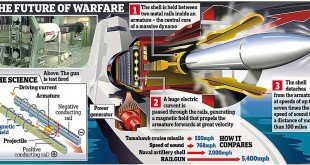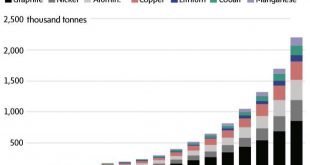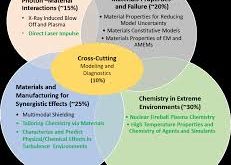Introduction: Optical gyroscopes, including fiber-optic gyroscopes (FOG) and ring laser gyroscopes (RLG), are at the forefront of revolutionizing guidance, navigation, and control systems in the fields of aviation, defense, and space exploration. These remarkable technologies have transformed the way we navigate, control, and stabilize various platforms such as aircraft, missiles, …
Read More »Navigating the Cosmos: The Promise of Interplanetary GPS (IPGPS)
Introduction As human exploration of our solar system expands, the need for precise navigation, positioning, and timing services becomes increasingly vital. To address these challenges, space agencies around the world are exploring the concept of an Interplanetary GPS (IPGPS) system. IPGPS is envisioned as a network of satellites that would …
Read More »Revolutionizing Defense: The Versatility of Railgun Technology from Warships to Trucks
Introduction: In the ever-evolving landscape of military technology, railguns have emerged as game-changers, showcasing their prowess from warships to mobile platforms. The Electromagnetic Rail Gun (EMRG) has redefined the landscape of military technology, harnessing electricity to propel projectiles at astonishing speeds, surpassing Mach 5 and reaching distances of over 100 …
Read More »Revolutionizing Space Communication and Power Transfer with FSOCP: Enabling Technologies
Introduction In the vast expanse of space, communication and power are lifelines for satellites, spacecraft, and future missions. Free-Space Optical Communication and Power Transfer (FSOCP) represents a groundbreaking technology that is poised to revolutionize how we transmit data and energy through the cosmos. FSOCP combines the power of optical communication …
Read More »DARPA’s REMA Program: Ensuring Drone Resilience to Electromagnetic Interference
Introduction Commercial drone technology has witnessed significant advancements, expanding its applicability in both civil and military missions. As drones play increasingly crucial roles in military operations, adversaries are exploring ways to disrupt communication links between drone operators and their aerial vehicles through electromagnetic countermeasures. These disruptions can compel drones to …
Read More »Global shortage of battery minerals: Solution approaches to mitigate the threat stalling the electric vehicle growth
Introduction The world is at a critical juncture in the pursuit of sustainable transportation. Electric vehicles (EVs) offer a promising solution to reduce greenhouse gas emissions and combat climate change. However, a major roadblock stands in the way of their widespread adoption – the global shortage of battery minerals. As …
Read More »Revolutionizing Warfare: High Power Fiber Lasers and the Era of Laser Directed Energy Weapons
Introduction: The world of military technology is undergoing a profound transformation with the advent of High Power Fiber Lasers (HPFL). These lasers, harnessing the principles of “light amplification by the stimulated emission of radiation” (LASER), are at the forefront of innovation, enabling the development of Laser Directed Energy Weapons (LDEWs). …
Read More »NASA’s Deep Space Optical Communications: The Cutting-Edge Technology of Space Communication
In the vastness of space, communication is the lifeline that enables us to explore, discover, and connect with the far reaches of our universe. NASA, always at the forefront of cutting-edge technology, is pioneering a new era in space communication with Deep Space Optical Communications (DSOC). This groundbreaking technology promises …
Read More »Revolutionizing Earth Observation: The Power of Multi-Sensor Satellite Technology
Introduction In the ever-evolving realm of space technology, satellites have become our silent sentinels, providing us with invaluable insights about our planet. With each passing day, these marvels of engineering are equipped with increasingly advanced sensor systems that enable us to monitor, analyze, and understand Earth’s dynamic processes. Multi-sensor satellite …
Read More »Safeguarding National Security: U.S. DOD Develops Advanced Materials for Extreme Environments
Introduction: In a world where military technologies are constantly evolving, the United States Department of Defense (DOD) is at the forefront of innovation, pushing the boundaries of materials science to enhance national security. The development of advanced materials capable of withstanding extreme environments is a strategic imperative for the U.S. military. …
Read More » International Defense Security & Technology Your trusted Source for News, Research and Analysis
International Defense Security & Technology Your trusted Source for News, Research and Analysis




